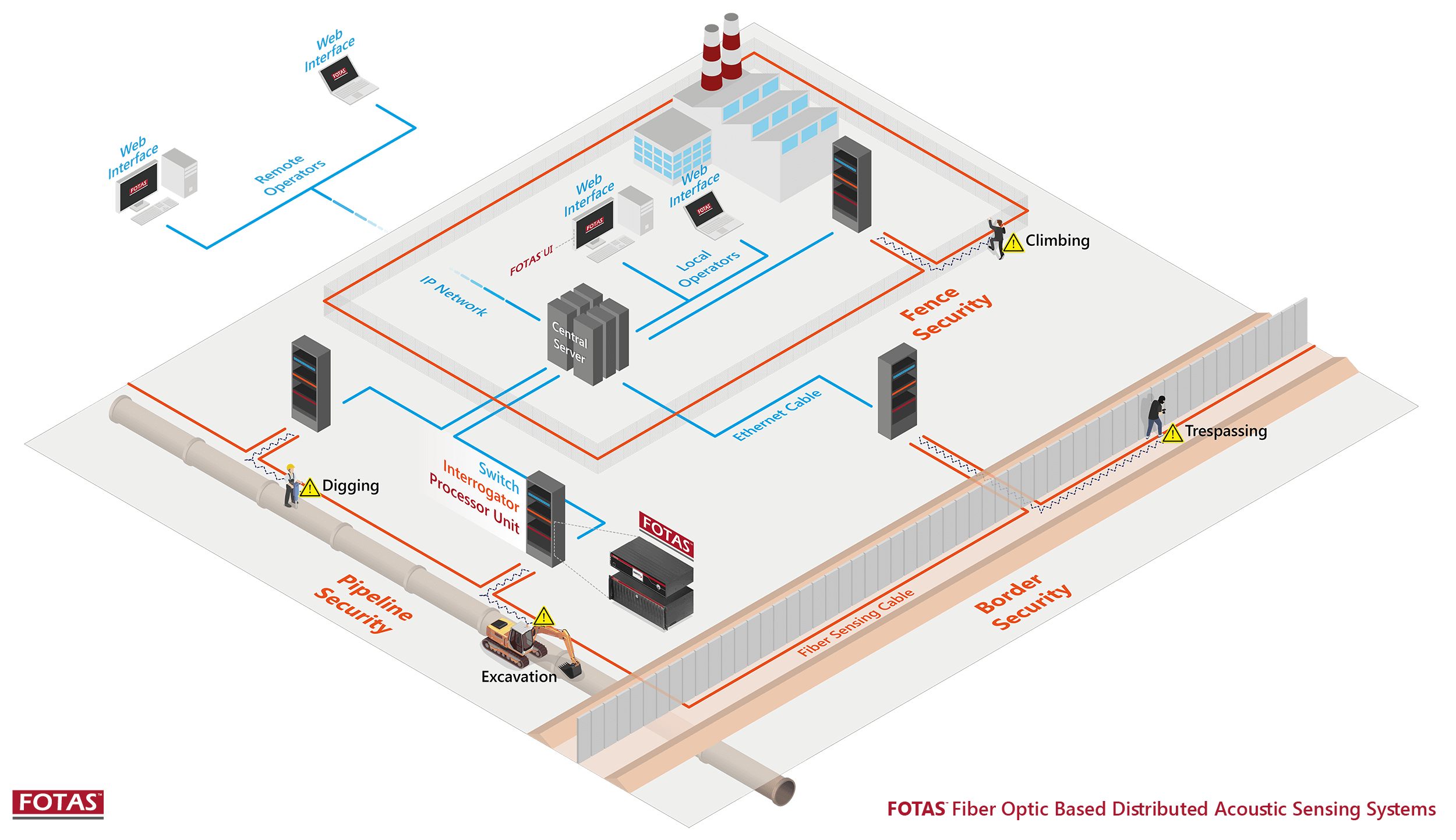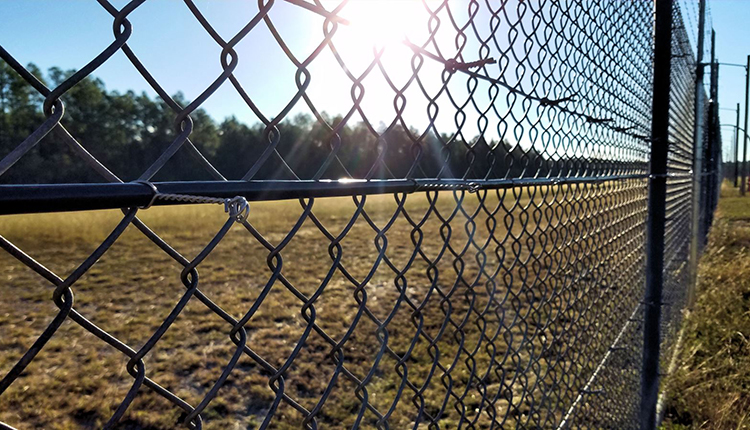Secure Your Home With Reliable Fiber Optic Safety And Security Solutions
In an age where protection hazards are significantly advanced, the need for efficient security services is extremely important. Fiber optic security systems attract attention by offering outstanding dependability and performance, leveraging innovative light transmission innovation to enhance surveillance capacities. These systems not only provide immunity to electromagnetic disturbance yet also assure long-lasting cost performance with reduced upkeep requirements. However, the decision to buy such an option includes mindful factor to consider of different factors. Comprehending the ins and outs of fiber optic safety can brighten the course to guarding your residential property better. What facets should be discovered to maximize your financial investment?
Advantages of Fiber Optic Protection
Fiber optic protection services supply a series of advantages that make them increasingly important in today's electronic landscape. One of one of the most substantial benefits is their premium bandwidth ability, which enables the transmission of big amounts of data over cross countries without substantial signal destruction. This capacity is specifically useful for safety systems that count on high-def video clip monitoring and real-time surveillance.
Furthermore, fiber optic cables are inherently more safe and secure than traditional copper circuitry. They are unsusceptible to electromagnetic disturbance, making them much less prone to hacking or eavesdropping. This enhanced protection is crucial for protecting sensitive information and keeping the honesty of security systems.
Moreover, optical fiber are much more resilient and immune to environmental variables, such as moisture and temperature level variations, guaranteeing long-lasting integrity and lowered upkeep expenses. The lightweight nature of fiber optic wires also streamlines setup procedures, permitting for higher adaptability in system design.
How Fiber Optic Solution Work
In contemporary protection applications, the procedure of fiber optic systems relies upon the concepts of light transmission with versatile glass or plastic fibers. These fibers are made to bring light signals over fars away with minimal loss, making them ideal for transferring information associated to security tracking. The core of the fiber, bordered by a cladding product, guarantees that light signals stay contained within the core with a sensation known as complete interior reflection.
When integrated into security systems, fiber optic cords can transfer data from numerous sensing units, such as electronic cameras, motion detectors, and alarms, to a central surveillance terminal. The high data transfer capacity of optical fiber enables the transmission of huge amounts of data all at once, making it possible for real-time monitoring and punctual reaction to potential risks.

Kinds of Fiber Optic Protection Solutions
Various types of fiber optic security services have actually arised to boost security and protection across different environments. One popular service is fiber optic border invasion detection systems (PIDS), created to keep an eye on and secure home borders with the detection of resonances and disturbances along fiber optic cables. These systems provide real-time alerts, making it possible for timely actions to unapproved gain access to efforts.
Another reliable option is fiber optic video monitoring. This innovation leverages high-definition electronic cameras linked via fiber optic cords to send video data over cross countries without substantial loss of top quality. This setup is specifically advantageous in extensive locations, such as flight terminals and industrial websites, where typical copper cable televisions might fail.
Additionally, fiber optic sensors are progressively made use of for ecological surveillance, finding modifications in temperature, stress, or acoustic signals that might indicate protection breaches or dangerous problems. These sensors provide high level of sensitivity and precision, making them excellent for important framework protection.

Installment and Maintenance Tips
Reliable setup and upkeep of fiber optic safety options are critical for guaranteeing their ideal performance and long life. Fiber optic cords should be routed safely, staying clear of sharp bends or twists that could compromise their honesty.
During setup, it is recommended to conduct thorough testing of the system to validate that all parts are operating appropriately. Routine upkeep checks ought to be scheduled to check the fiber optic cords for any type of indications of wear or damages, in addition to to ensure that connections stay safe and secure. Cleaning the connectors occasionally is also crucial to avoid signal loss due to dust or particles.
In addition, maintaining an upgraded inventory of mounted parts and their requirements can promote less complicated troubleshooting and upgrades. By adhering to these installment and upkeep suggestions, residential or commercial property proprietors can make best use of the performance of their fiber optic safety options, ensuring a reliable protection versus prospective risks.
Comparing Expenses and Efficiency
When assessing fiber optic fiber optic security system protection services, comprehending the equilibrium between costs and efficiency comes to be extremely important (security fibers). Organizations should think about the in advance investment, recurring maintenance expenditures, and the long-term worth these systems give. While fiber optic systems may need a higher preliminary installation cost compared to typical copper circuitry, their resilience and reduced sensitivity to electro-magnetic disturbance commonly equate to reduced upkeep prices with time
Efficiency is another critical factor; fiber optic protection systems supply boosted information transmission rates and boosted reliability. They can cover bigger distances without signal destruction, making them excellent for extensive homes or remote areas. The high data transfer ability sustains advanced safety applications, such as high-definition video security and real-time tracking, which are necessary for extensive safety and security management.
Inevitably, the option in between expense and effectiveness need to be assisted by specific protection requirements and risk evaluations. Organizations has to analyze their unique needs, thinking about elements like building dimension, safety dangers, and technical advancements. By performing a comprehensive cost-benefit analysis, stakeholders can make enlightened choices that straighten with their security purposes while ensuring a sound financial investment in fiber optic technology.
Conclusion
Finally, fiber optic security remedies provide substantial advantages in regards to performance, dependability, and resistance to environmental interferences. These systems improve monitoring capacities and boundary safety, making them an effective choice for comprehensive defense. Initial setup costs might be higher, the long-term benefits, including minimized upkeep and exceptional performance, validate the investment. Eventually, the adoption of fiber optic innovation stands for a forward-thinking method to protecting properties against developing safety hazards.